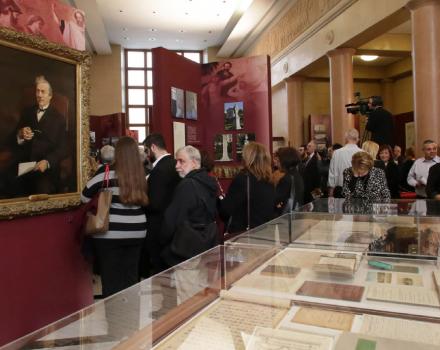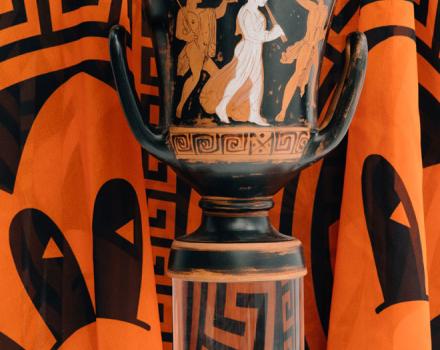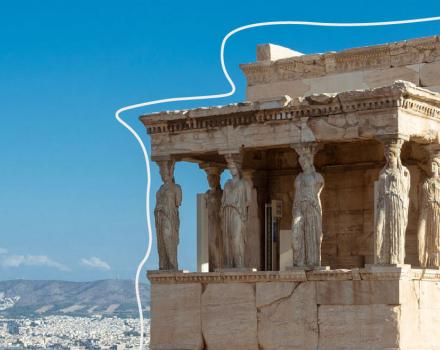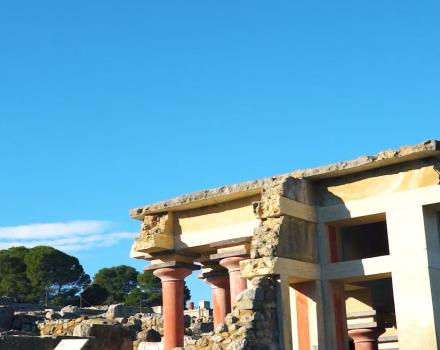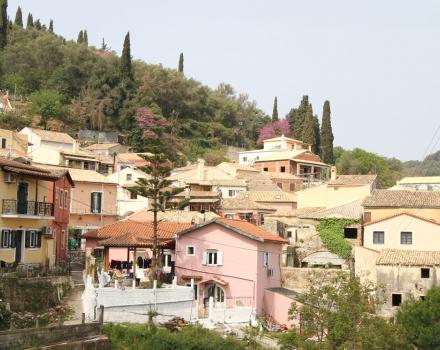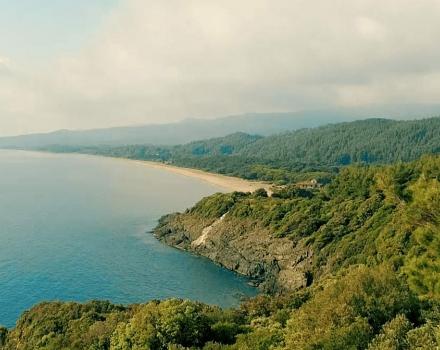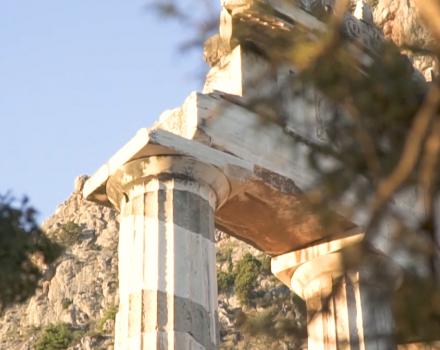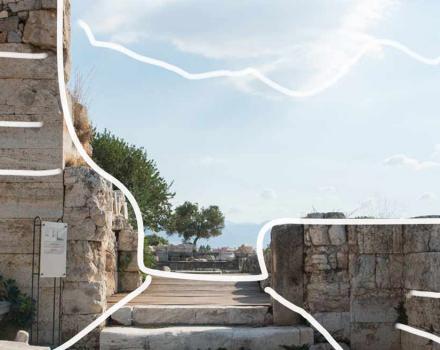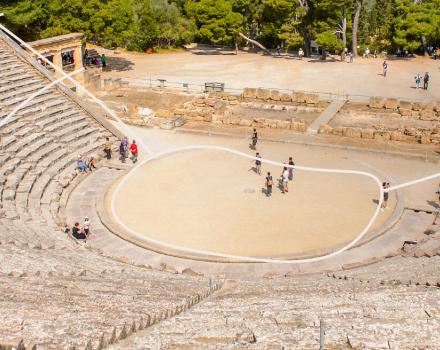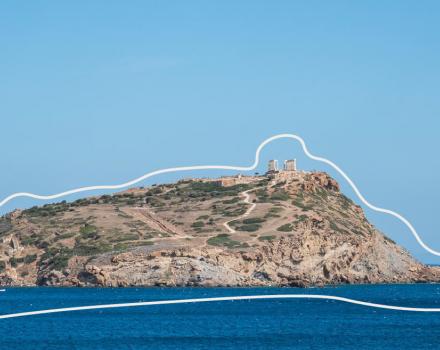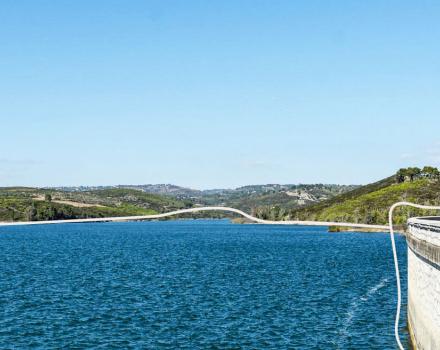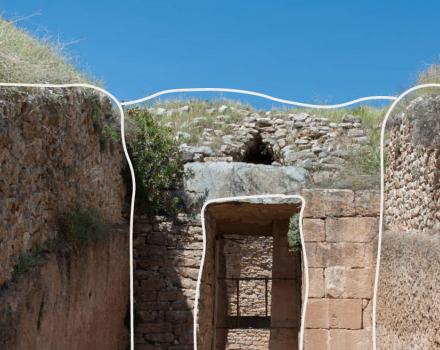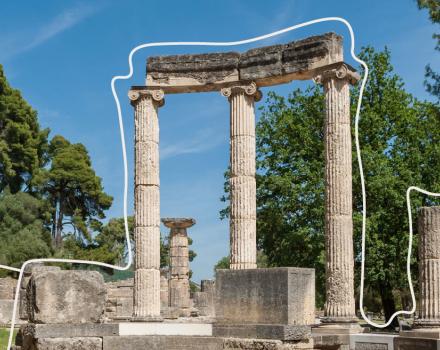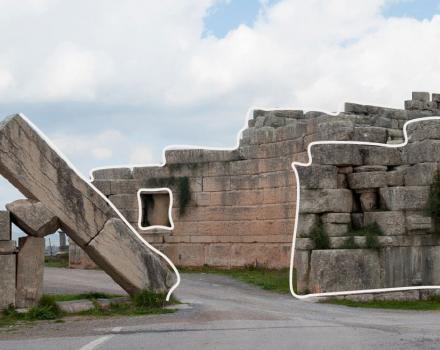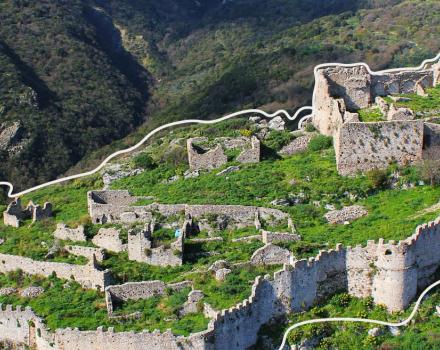Emblematic finds, rare photographs and excavation diaries present the excavations in the Cyclades and narrate stories with protagonists the people who worked to discover, rescue and promote their monuments.
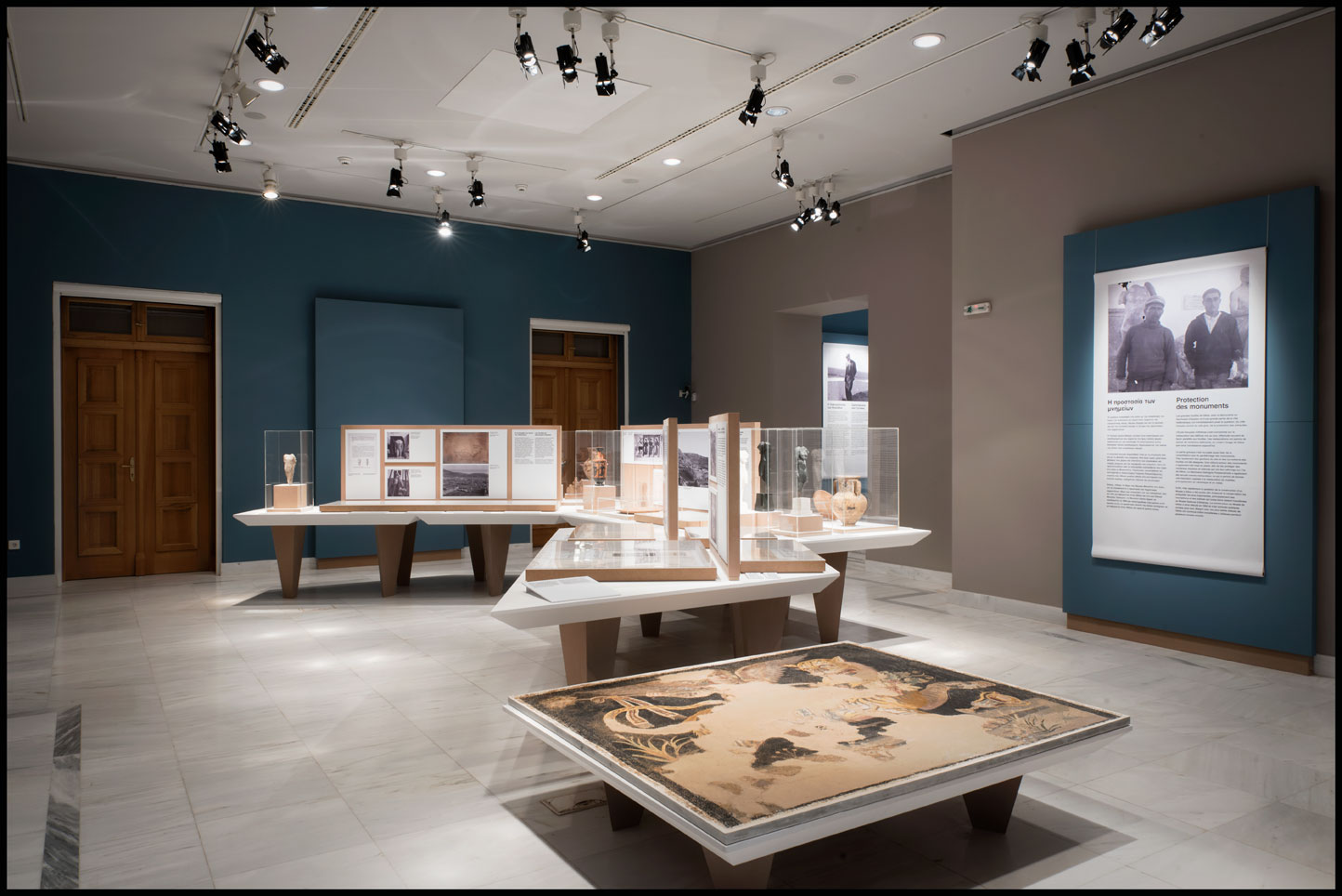
Those of us who did not have the chance to see on sight some of the emblematic finds of the Cyclades, such as the famous mosaic emblem from the house of Dionysus in Delos, can now enjoy them at the exhibition "Cycladic snapshots of the monuments and their people". The exhibition is hosted by the Byzantine and Christian Museum until the end of February, and along with the archaeological finds, many of which are displayed for the first time, one can see rare archival material from excavations in the Cyclades. These are photographic material and diaries of the excavations that narrate the struggle and anguish of the famous archaeologists and the unknown workers who worked for the discovery, protection and promotion of the Cycladic monuments.
The famous mosaic from the house of Dionysus in Delos, a work that tells the glamor of the cosmopolitan island in Hellenistic times, is exhibited in Athens for the first time
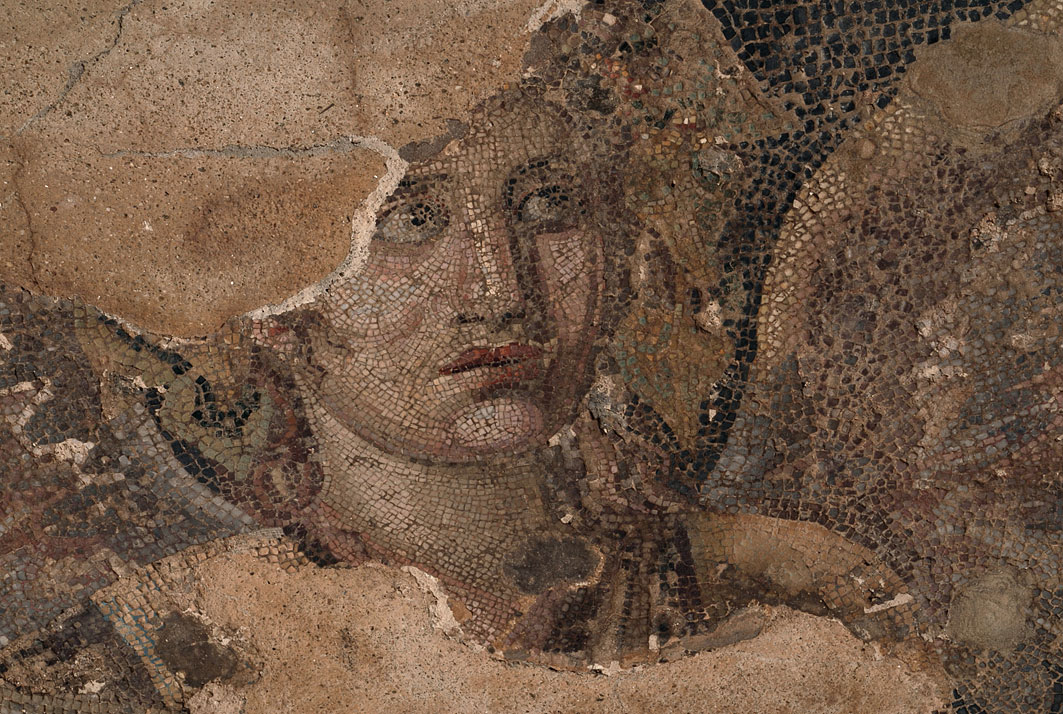
The exhibition is organized by the Cyclades Ephorate of Antiquities in collaboration with the French Archaeological School of Athens and the Byzantine and Christian Museum and narrates the birth and evolution of archaeology in the Cyclades through three sections. The first section presents the initial excavations of the 19th century in Delos and Rheneia, which was its necropolis. Here is emphasized the contribution of the French School of Athens and of the newly established Greek state’s Archaeological Service to the discovery of the marvelous Sanctuary and the busy harbor of Delos, one of the first sites to be excavated. We are talking about the late 19th century, a time when traveling to the Cyclades was like a “small odyssey”, fascinating however to the archaeologists who brought to light unique antiquities and wonderful city-states such as Delos.
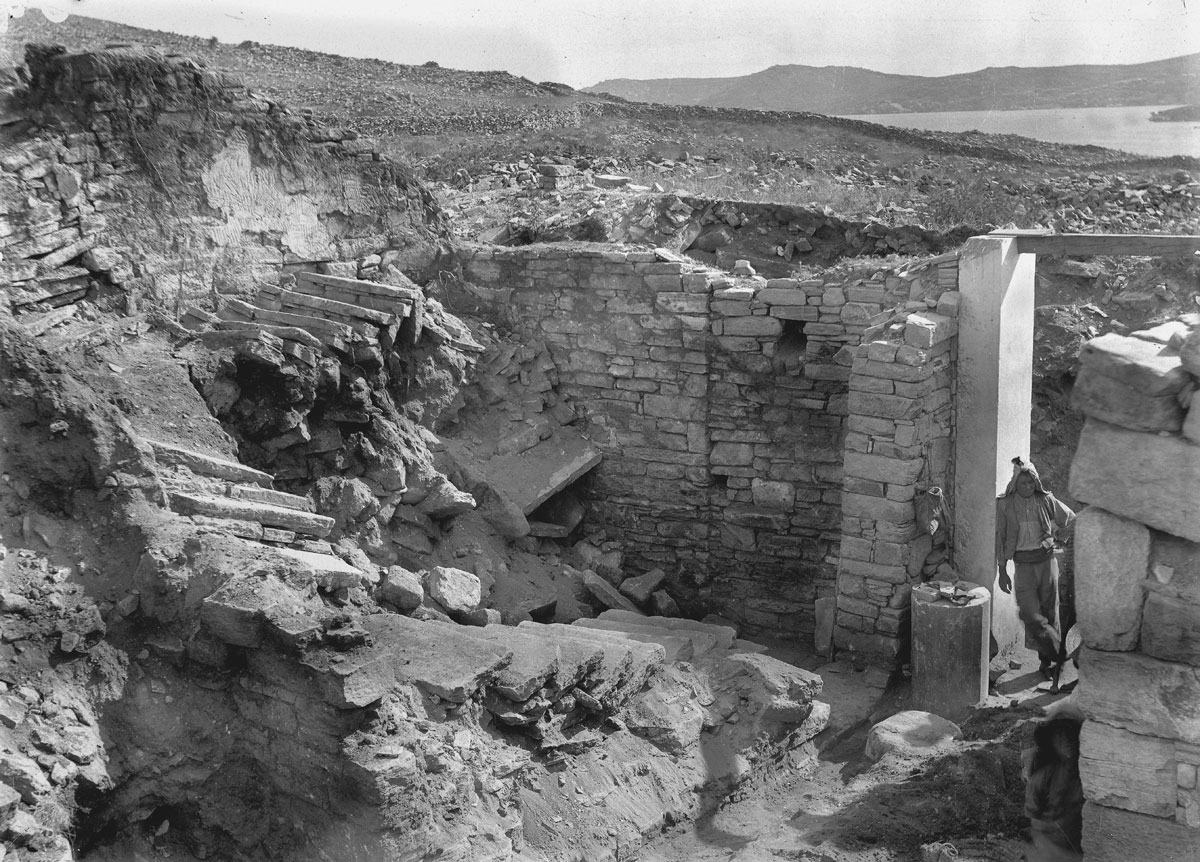
The most important exhibit of the first section is the mosaic from Dionysus’ house in Delos, 2nd-1st c. B.C., which depicts a tiger and traveled from Delos’ Museum, in order to be displayed for the first time in Athens. A masterpiece that reveals the wealth of the Hellenistic Delos after 166 B.C., when the Romans declared the imperfection of the harbor, transforming the island, a dot on the Mediterranean map, to the biggest trading center of the then known world.
The second section of the exhibition is a tribute to Nikolaos Zafiropoulos, the archaeologist who devoted his life to the protection and promotion of the Cyclades’ archaeological wealth. His multidimensional work includes the excavation of the cemetery of ancient Thera in Sellada, from which for the first time is displayed for the wider public an impressive model of an oikiskos with 103 artifacts. It was found in a feminine burial, is a miniature of the Theran household of that period and it is perhaps the exhibition’s most important exhibit.
" The first steps were made by the archeology science in 1873, when French and Greek archaeologists began the excavations of Delos, surprised by the quality of its antiquities
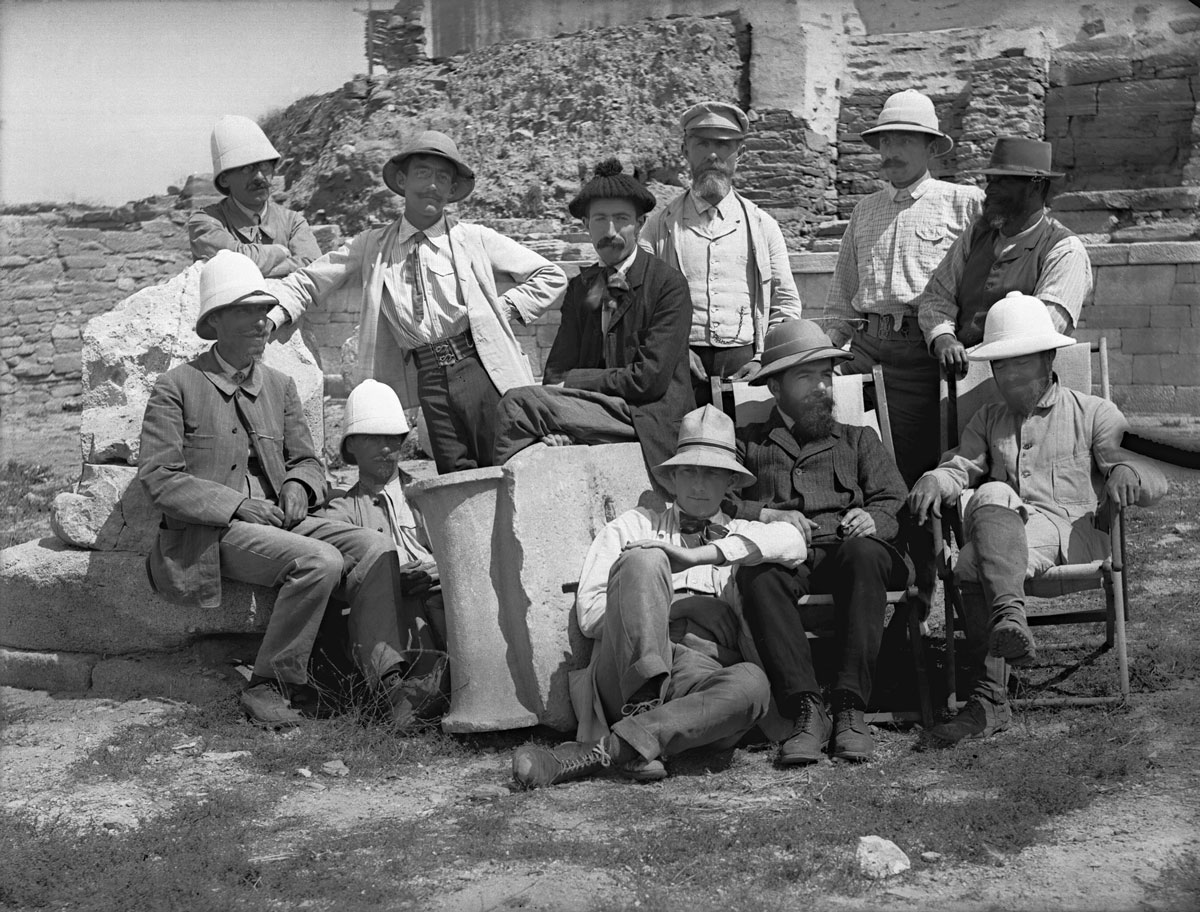
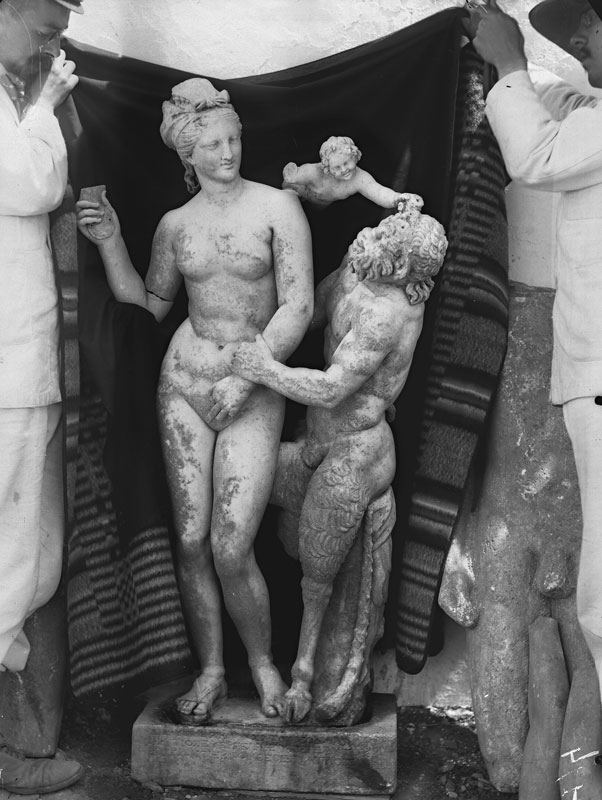
The final section throws light on Byzantine and Post-Byzantine monuments of the Cyclades and narrates stories about monumental painting and portable icons. Among the exhibits a Byzantine mural painting of the 13th c. A.C. stands out, from a church in Naxos, which depicts Aghios Georgios the dragon-slayer with Aghios Nikolaos, and of course the famous “Assumption of the Virgin”, a Byzantine style icon that El Greco painted around 1562-1564, during his stay in Crete. The portable icon was in the church of “Assumption of Mary” in Syros, where it was unexpectedly discovered in 1983, causing great emotion.
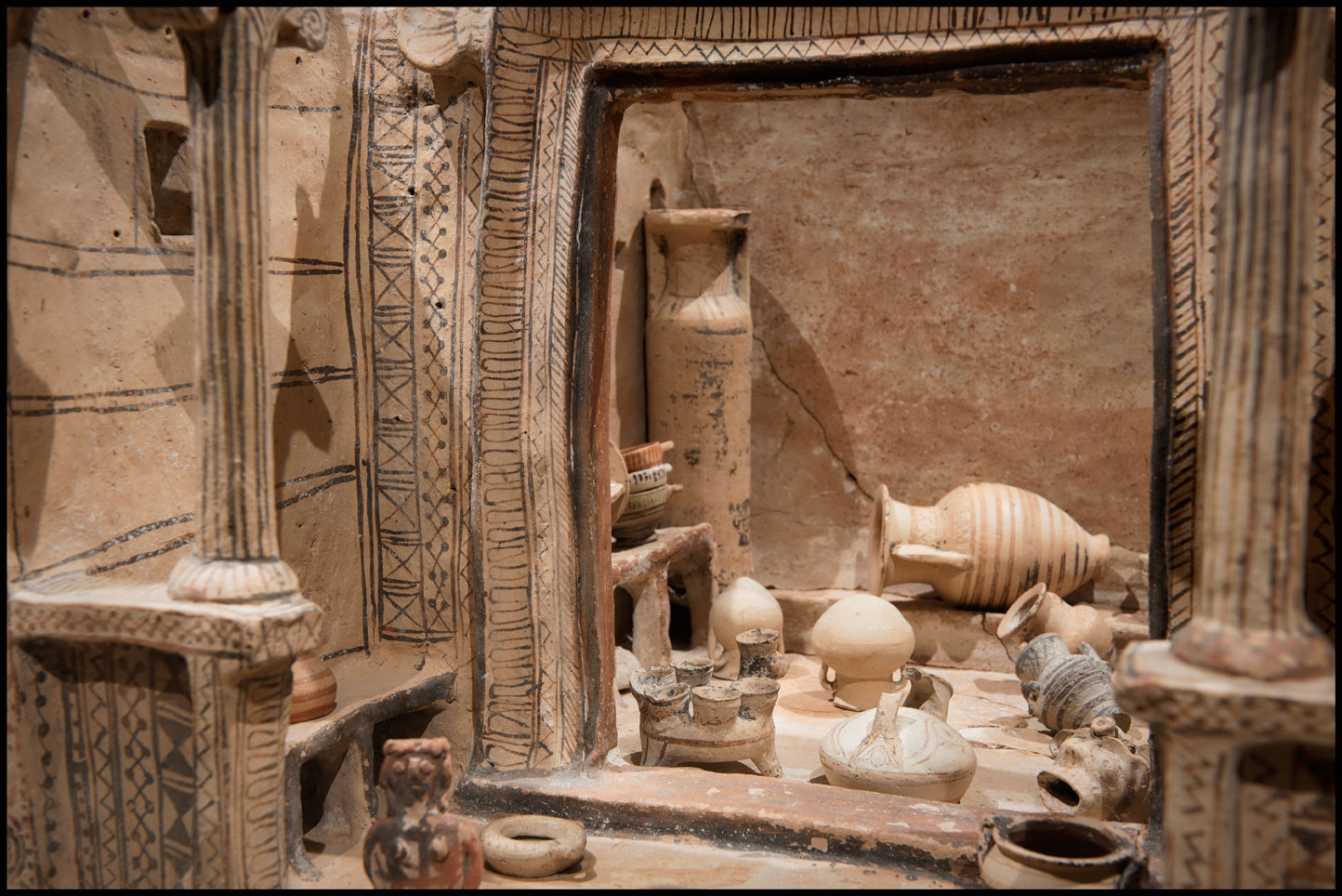
Info: Exhibition "Cycladic Snapshots from Monuments and Their People", Byzantine and Christian Museum, 22, Vasilissis Sofias Avenue, Athens, until 28th of February.
